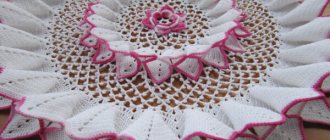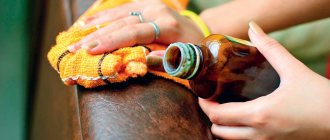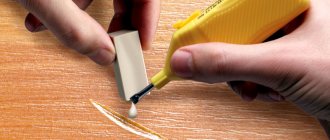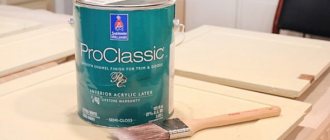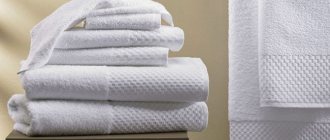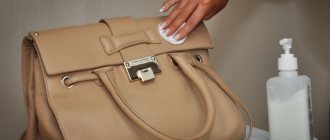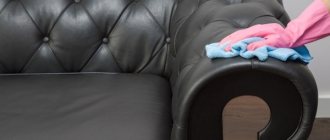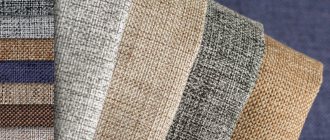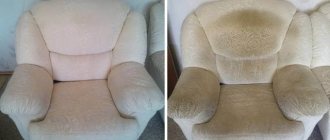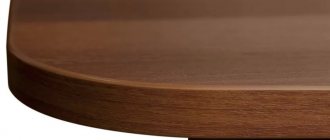Home textiles and some items of clothing sometimes have to be treated with starch to give them rigidity and a clear shape. In modern times this is done much less frequently than, for example, at the end of the last century. Starched items are much less susceptible to contamination and have a completely different appearance than simply washed items. Read more about how to starch bed linen, tulle, clothes, using or without a washing machine, in the text of this article.
Starched items look elegant, fresh and festive
Why is laundry treated with starch solution?
Clothes and linen are starched to achieve the following purposes:
- increased density, thereby increasing resistance to wear;
- the fabric acquires moisture- and dirt-repellent properties, so you will have to wash things less often;
- giving a rigid shape;
- the treated fabric wrinkles less when worn;
- bleaching, white things look snow-white after the procedure.
Sometimes thin fabrics are treated with a starch solution before cutting, this allows for maximum cutting accuracy.
But this processing method also has negative sides. Starched items are less breathable and absorb moisture.
What things should not be starched?
The following things should not be starched:
- Underwear. Reduced breathability and ability to absorb moisture reduces the hygienic properties of linen. And it can even cause the development of fungal and bacterial infections.
- Sports and summer clothes. These items are not treated with starch solution for the same reasons as underwear.
- Synthetic items. Synthetic fibers do not change their properties when processing starch, that is, the procedure will be useless.
- Items decorated with embroidery. Embroidery threads may stick together when exposed to starch solution.
Basic Rules
Starching fabric at home is not difficult, let’s figure out how to do it correctly.
Basic Rules:
- Only clean clothes can be processed; as a rule, they are starched immediately after washing;
- for processing it is better to use corn starch, but you can also use potato starch;
- Depending on the type of fabric and the tasks at hand, the concentration of the starch solution is selected. There are three options - weak, medium, concentrated.
The procedure can be carried out either manually or in an automatic machine. When working manually, you need to make a solution and immerse the item completely in it for a short time. Then the item is removed, gently wrung out, straightened and dried.
If you plan to carry out the procedure in a car, then the prepared starch solution must be poured into the compartment intended for the air conditioner. After completing the cycle, be sure to rinse the tray to remove any remaining starch.
You can cook not only the whole thing, but also its individual parts. For example, for men's shirts, only the collar and cuffs can be starched. This can only be done manually.
Types of starching
There are three types of starching, which vary depending on the intensity of the procedure:
- Soft starching,
- Medium starching
- Hard starching.
For example, underwear, bed linen, bedding, light blouses and dresses are softly or very softly starched; Men's shirts and tablecloths are moderately starched, but hard starching is used in the case of partial processing - for cuffs, collars and other elements of clothing. At the same time, the amount of starch per liter of water varies.
How to starch different things
The concentration of the starch solution is chosen depending on the type of item. For example, a soft solution is used for a shirt, but for a petticoat, which must hold its shape rigidly, a solution of higher concentration should be prepared.
Skirt, blouse, dress
To starch a skirt, dress or blouse, prepare a soft solution. The purpose of processing is that the fabric should thicken a little, but not become stiff and not stand up.
Procedure:
- inspect the item, if there are stains, remove, wash;
- boil 2 liters of water;
- dilute 1 full tablespoon of starch in a cup of cold water;
- pour the prepared suspension into boiling water, stir;
- pour the solution into a suitable container, let it cool to a warm state;
- put a blouse or skirt in the solution for 5 minutes;
- gently squeeze, straighten and dry, hanging on hangers;
- air dry in the shade or indoors.
After this treatment, you need to iron your skirt or blouse through a layer of gauze.
Petticoats
A petticoat is worn to add fullness to flared skirts. It is important to ensure that this toilet part holds its shape well. To do this, prepare a medium-hard starch solution.
To prepare the solution, take 2 liters of water and 2 tablespoons of starch. They act in exactly the same way as when treating a skirt with starch solution.
Medical cap
The medical cap must hold its shape well, so a hard starch solution is used. The same solution is used to treat collars and cuffs of men's shirts.
To prepare a hard solution, use 4 tablespoons of starch per 2 liters of water. Immerse the medical cap in the concentrated solution for no more than 2-3 minutes.
To obtain special hardness, borax is added to the starch when preparing the solution. Proportions:
- 2 liters of water;
- 100 g starch;
- 2 teaspoons borax.
The product is prepared as follows: stir starch in a glass of cold water. Stir borax in the same amount of hot water. Boil the remaining water, pour the starch solution into it while stirring constantly. Remove from heat and pour in the borax solution, stir. Let the solution stand for 2 hours. Warm until slightly warm before use.
Bed sheets
To starch bed linen, you can prepare a solution with a mild or medium concentration. The last option is chosen if you want the laundry to “crunch”. It is more convenient to starch such bulky items in the washing machine.
Features and nuances of processing
The easiest way to starch is flax or cotton. These are perhaps the most picky fabrics that can withstand any amount of starch and acquire the desired shape and structure. The most difficult thing is to deal with silk and do everything correctly so as not to damage the fabric.
In addition, some ladies do not understand how best to starch a hat to restore or shape it. Following the six rules of starching will help dispel all fears and doubts.
- Thin fabrics. Organza, natural silk, chiffon require a delicate approach. Starch light fabrics using a weak starch (literally half a teaspoon) or gelatin solution. Silicate glue is perfect (one small spoon for five liters of water).
- Wool products. Wool stretches under the influence of hot water, so it is better to starch woolen items in cold water. Pour a tablespoon of the substance into a liter of water and mix. Soak the wool fabric for half an hour, then gently wring it out to remove moisture. Dry horizontally.
- Hats. Unlike hat brims and “tablets” with fascinators, it is correct to starch hats with a soft or medium solution. Hardly starched hats and caps will not fit well on the head and cause discomfort. In this case, the lace hat or knitted panama hat must be shaped into a lampshade until the headdress is dry. This can be done on a special layout or frame. A jar, pan, or vase turned upside down is also suitable.
- Fringe. It is very easy to restore the previous appearance of glued fringe. It is enough to hold the molded threads over steam and then comb them with a wide-toothed comb.
- Embroidery. Embroidery is usually not treated with paste. If you still want to starch the embroidered design, then you should use a medium solution. The embroidery is soaked, wrung out and ironed on the reverse side.
- Gate. Sometimes you only need to starch the collar of a shirt. To do this, use a concentrated solution. First, wipe the inside with hydrogen peroxide to remove light stains. Then dip only the collar into the paste. It is convenient to distribute the product with a wide soft brush. When the collar dries a little, iron it through a thin fabric.
Starched linen and clothes retain their neat appearance and shape longer. Knowing how to properly starch things, mothers and housewives can easily maintain their cleanliness and aesthetics. Using home remedies, following the recipe, you can starch any fabrics and products - from light silk bows to thick linen pillowcases.
Video on the topic
How to process different fabrics?
Most often, cotton or linen fabrics are treated with a starch solution. To process them, use the methods described above. To process other materials you need to know some nuances.
Chiffon
Thin chiffon requires delicate handling. This fabric is often starched before cutting, since the thin fabric does not hold its shape well and it is not easy to cut out parts from it. A soft solution is used for processing.
Fatin
Tulle is often used to make fluffy petticoats. To keep the petticoat in shape, use a solution of medium concentration. If you need to starch a veil for the bride, then a weak concentration is used.
Immerse the item in the solution for 2-3 seconds, no more. Then the item is carefully wrung out, straightened and dried.
Lace
Starch lace using a solution of medium and hard concentration. The first option is suitable if the lace trim of clothes is processed. Lace napkins are treated with a harsh solution.
To give the lace a dazzling white hue, use rice starch, diluting it in milk.
How to starch bed linen and tulle at home
Starched bed linen wrinkles less and washes better.
Bedding, as well as most types of tulle and curtains, are starched softly, after having been washed and thoroughly wrung out.
Tulle takes on a more attractive appearance after the starching process
Then prepare this solution:
- composition of the mixture – one teaspoon of starch per liter of cold water;
- First, the starch is diluted in a small container, poured with two glasses of water;
- the more laundry you need to starch, the more such liquid is prepared;
- stir so that the consistency is homogeneous, without lumps;
- then put the water on to warm up - as much as is needed for rinsing;
- after boiling, pour the starch solution from a small container into the water and mix;
- the composition is cooled - the result should be “slippery” water, denser than usual;
- Rinse the bedding in the mixture described above for several minutes, tulle for up to half an hour.
Traditional starch mixture made from potato starch
Before hanging to dry, do not twist the bedding - let it sag a little, after which you can lightly wring it out. Before drying, it is important to shake the fabric, straighten it well, and it is better to iron the starched fabric while still slightly damp.
To starch an already dry fabric, the liquid described above is put into a spray bottle and the clean textile is treated. This process significantly saves time and effort.
You can lightly starch the material by ironing it through gauze soaked in a weak starch solution
Ready-made solutions for ironing and starching in aerosols
You don’t have to prepare the solutions yourself, but buy ready-made ironing products in aerosols. Such products are sold in hardware departments. For example, you can use:
- Reinex. Ironing agent in aerosol packaging.
- Sano Iron Starch. A liquid that can be used to spray items before ironing, or poured into the water compartment of a steam iron.
- Top Cleaner. Aerosol product for treating shirt collars and cuffs.
- Satin. The product is in the form of a spray, used when ironing clothes. Convenient to use when ironing dry bed linen.
It’s easy to use ready-made products. The item is processed immediately before ironing. You can process both the entire thing and its individual parts. For example, a flounce on a skirt or a collar on a shirt.
DIY starch spray for ironing
You can make your own starch spray. This requires:
- 400 ml warm water;
- 1 tablespoon starch;
- 2 drops of any essential oil (optional).
Mix starch in water and pour the solution into a spray bottle. If you wish, you can add a couple of drops of any essential oil whose smell you like to the solution. Before spraying the solution onto the fabric, shake the bottle vigorously several times.
Is it possible to starch colored items?
As a rule, white things are starched. But colored and especially dark fabrics should not be treated with starch. Whitish streaks will remain on the surface of the product.
But if you need to stiffen the product, you should use other means. For example:
- Sugar. Prepare syrup from 100 ml of water and 200 g of sugar, avoiding boiling. If the syrup boils, you should not use it; it may leave brown spots on things. The cooled syrup is applied to the surface of the fabric with a sponge or brush. Allow to dry. A significant drawback of the method is that in summer the treated item will become a “magnet” for flies and wasps, attracted by the sweet smell.
- Gelatin. Gelatin solution is recommended for treating fabrics made from synthetic fibers. Depending on the desired hardness, take from 2 to 4 tablespoons of powdered gelatin per 1 liter of water. Prepare the solution according to the instructions on the package.
- PVA. Polyvinyl acetate emulsion is used to process knitted lace doilies. The solution is prepared at the rate of 100 g of glue for each glass of water.
- Stationery silicate glue. The method is suitable for delicate fabrics. The solution is prepared at the rate of 1 teaspoon per 5 liters of water.
If necessary, anyone can learn the rules for treating various things with starch solution. Please note that the next time you wash, the starch particles will be washed out. Therefore, if you want to stiffen the item, it will need to be treated with a starch solution after each wash.
What is it for?
The meaning of the starching procedure is to immerse or rinse things with a starch solution. Absorbed into fabric fibers, starch forms a very thin protective film on the surface of products.
Fabric impregnated with starch paste becomes more durable, less susceptible to wrinkles, and retains its shape well. The protective layer also prevents clothing from getting dirty. If you periodically starch your laundry, you will notice that it does not get dirty as much. It is impossible not to note the improvement in the quality of washing: the starch film, in contact with soapy water, instantly dissolves, and at the same time all contaminants disappear.
If you starch white linen, you can achieve the perfect whitening effect. Also a pleasant addition will be the exceptional freshness of things and a pleasant aroma.
